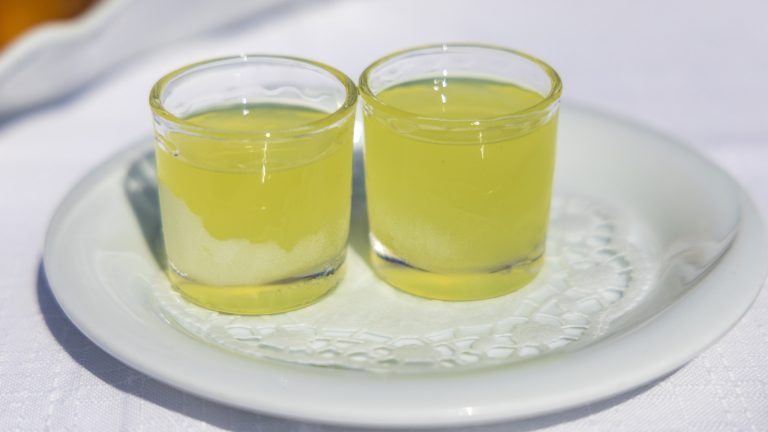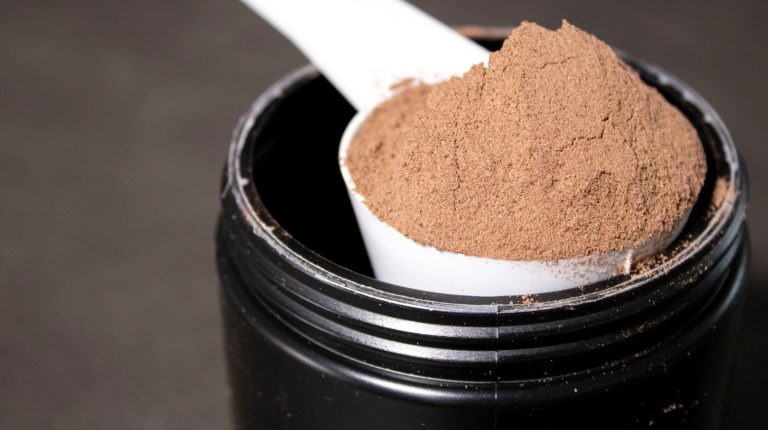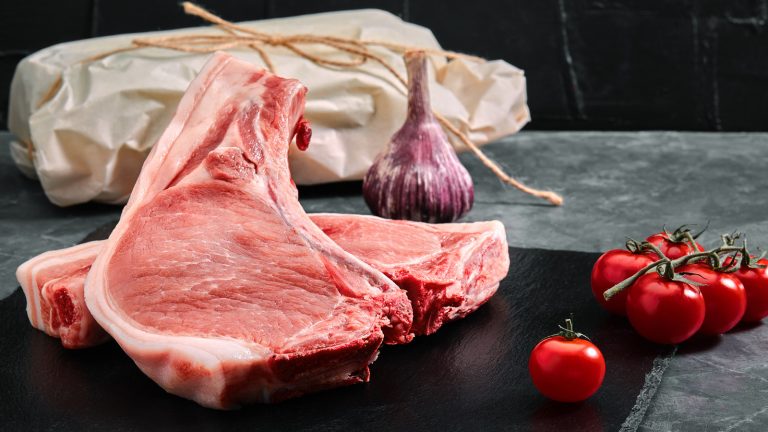We may receive a commission on purchases made from links.
Questions abound when it comes to dishware. Should you stack your plates at a restaurant? Are Costco dinnerware sets a good investment? How can you remove scratches from dinner plates? And so forth. But probably no question is as common as “How can I make my dining set more interesting?”
The truth is, plates are meant to be functional, from the dining room table to a luxurious buffet. Whether you’re serving up a plate of protein, an easy no-cook brunch, or a beautiful dessert, plates are the vessels on which you will do it. Yet that very functionality sometimes gets in the way of the potential beauty of dining sets, which can take your table setting to the next level if you know what to do. One of the best tips? Learning how to mix and match plateware.
“Creating a unique dinnerware set is one of the smartest and most beautiful ways to express your personal style at home,” says Iryna Kolosvetova, creative director and table styling expert at Fine Dining 4 Home. “I like to think of it as building a capsule wardrobe, but for your table. Every piece you choose adds character, tells a story, and reflects the way you love to host. It’s not only visually striking but also incredibly fun and clever to build over time.” Once you put in some time and effort, you’ll have a unique, layered, curated collection on which you can lean for the rest of your dinner-party-throwing years.
Choose a core palette
“Mixing and matching plateware is one of my favorite tricks for creating a table that feels both personal and polished,” says Tony Roberts, an interior designer at Direct Splashbacks. As for how to mix and match plateware, it starts with color. “Begin by selecting a main color, a neutral, and one or two accent colors. That way, you can feel free to mix styles and strike a visually cohesive note.” He likens this to assembling a killer outfit that draws attention to accessories while maintaining overall cohesion.
“Start with a unifying neutral,” recommends Rachel Blindauer, principal interior designer at Rachel Blindauer. White, ivory, or charcoal are all excellent main colors to build your set around. “Then, thoughtfully layer in one or two accent hues to add personality.” These can provide additional pops of color. The Pfaltzgraff Sylvia 32-Piece Dinnerware Set, for example, is a good place to start.
You needn’t keep your mix-and-match plateware the same year-round. This can reflect the season or your mood, says Jeannine Rose, founder of Sweet Humble Home. It then becomes easy to layer in extra seasonal elements with florals or napkins.
Don’t try to match hues exactly
One key to learning how to mix and match plateware is not to try and match hues exactly. Do that, and you’ll spend all your time looking for combinations that never really seem to fit, which is a recipe for frustration if ever there was one. Instead, says Iryna Kolosvetova, “The trick is choosing a shared undertone (warm or cool), so even unexpected combinations feel cohesive.” As long as you do this, you can pair up greens in different shades or color combinations, and they will feel like they were made to go together.
If you’re worried about getting it right, stick to a neutral color plus one “pop,” says Laura Cassell Fischer, VP of Merchandise and Product Development at over&back. “It still feels familiar with a little twist.”
Make sure each piece has one color in common
The next step in how to mix and match plateware is to pick a common color. “When at least one color ties everything together, even wildly different plates look like they belong,” Iryna Kolosvetova explains. “A neutral base anchors the set, the main color creates cohesion, and accent colors add a playful, seasonal, or thematic touch.” Plus, if you continue to follow the central color, you can build out your set for more mix-and-match options.
Whatever you do, make sure that something is pulling everything together. Tony Roberts says: “Without it, your table may resemble a garage sale rather than a curated collection.” Note that your common color needn’t be neutral. Kolosvetova loves more unique colors, such as soft blush, deep green, or even vibrant yellow. You can then build around those hues with lighter or darker, bolder or more muted shades.
But, because it’s no fun if someone isn’t playing Devil’s Advocate, “I don’t necessarily think each piece must have a color in common,” Laura Cassell Fischer says. “In fact, you can have multiple colors, and if they are complementary to each other (opposite to each other on the color wheel), they will work.” You can pair two dark complementary shades, she says, which will create a super-dramatic feel. Or you can pair two lighter tints, which produces a charmingly muted result.
Pick a variety of shapes
The shape can also lend drama when you’re learning to mix and match plateware. For instance, “Pair round dinner plates with scalloped or octagonal salad plates for a subtle architectural tension,” Rachel Blindauer says. “These shifts in silhouette are like adding unexpected pauses in a song — they make the composition sing.” Iryna Kolosvetova agrees, pointing out that mismatched shapes add depth and personality to your table, making it more visually interesting.
Suspicious that round and square shapes can’t possibly work together that well? You’re not alone, but they do, and the effect can be impressive. “Don’t shy away from mixing plate shapes,” Jeannine Rose advises. “Square and round together look charmingly casual.” A softly squared or scalloped square can lighten the mood. And don’t forget, Tony Roberts says to make sure they nest well. Avoid weird overhangs or jagged-looking corners, which can prove too much for the eye to take in.
Play with textures
If you’re starting to feel like there are endless possibilities when mixing and matching plateware, you’re correct. Next is texture, which offers tons of potential for making a set your dinner guests have never seen. “Just a little textural contrast can read as layered and considered,” Tony Roberts says, “particularly under mood lighting.”
There are many ways to do this, among the most basic of which is to combine glazed and matte finishes. This “instantly adds visual interest, especially when everything else stays simple,” Iryna Kolosvetova says. Or, she says, “Rough ceramics next to smooth china can feel curated and artisan without being too busy.”
“Texture always brings a table to the next level,” Jeannine Rose agrees. She advises you pair smooth with textured options, such as something embossed, to keep things interesting. You could also consider “Mixing matte stoneware with glossy porcelain or adding in reactive glazes brings depth to the table,” Rachel Blindauer says. “The contrast between finishes makes even a monochromatic palette feel considered.”
Mix and match patterns
Patterns are yet another rich field of possibility. “If at least one color is held in common, patterns can work together wonderfully,” Tony Roberts says. “Experiment with florals with geometrics or stripes. The key is balance and allowing each design room to breathe.” If you’re looking for some fun geometric options, for instance, you might consider the Vancasso 12 Pieces Dinnerware Set or the Euro Ceramica Zanzibar Collection 16 Piece Dinnerware Set.
Jeannine Rose is also a fan of this strategy but is similarly concerned about balance. “Stick with similar colors or themes when mixing patterns, like florals with stripes, to keep it cohesive but fun,” she advises. “You can also alternate patterns.” But, Iryna Kolosvetova cautions to not overdo it. Make sure if you’re using multiple patterns one stands out. “If you’re using patterns, let one be the star,” she says. “A floral or striped plate pairs beautifully with solids that echo one of its colors. The idea is to create music, not noise.”
Whether you’re using floral with stripe or toile with ticking, Rachel Blindauer reminds us that the patterns share a color. “Think of it as conversational plateware,” she says. “Every piece different, but everyone speaking the same language.”
Alternate colors when stacking
Another important entry in the bible on mixing and matching plateware is to stack colors in an alternately to help them stand out. “It’s a simple trick that adds instant style,” Jeannine Rose says. Otherwise, you can end up with a tepid result that makes it hard for the eye to determine where one plate ends and another begins. “Using the same shade all the way through can feel flat and boring, while stacking alternating colors makes each layer pop,” Iryna Kolosvetova says. “It adds dimension to the table, but I suggest sticking to hues within the same undertone (warm or cool) to keep the look cohesive.”
Trust your own intuition, though. “The good news here is that there really are no rules,” Laura Cassell Fischer says. It’s up to what you like, whether alternating colors or three separate bold hues you think marry well. Rachel Blindauer agrees that alternating can be beautiful, but you shouldn’t stick to dogma above all else. “The goal is flow, not formula. Trust your eye more than the rulebook.”
Get creative with materials
If color, shape, texture, pattern, and alternation don’t do it for you, you can always put your designer cap on and get creative with materials. Indeed, this is one of the most innovative approaches to learning how to mix and match plateware. Iryna Kolosvetova loves mixing stoneware, glass, and wood into her unique dining sets. Although you shouldn’t go overboard, choosing an accent material can really set off the plain ceramic or china you use for the rest of your dining set.
Don’t take it too seriously, either. Just let your eye guide you when selecting different materials for your plateware. “It’s all about adding texture and telling a story,” she says. “I always remind my clients: Perfection isn’t the goal, personality is. A mix-and-match table feels more relaxed, more lived-in, and more inviting — and that’s what truly sets the mood.”
Pair modern with vintage
Again, make sure to avoid getting too set on any rule. This is particularly important to keep in mind when you’re first learning how to mix and match plateware. Nowhere is this truer than in the vintage of a plate. Whether it was minted last week or 80 years ago, dinnerware needn’t match decades to match up on your table.
“The tension between eras is what creates soul,” Rachel Blindauer says. “Pair a sleek coupe plate with your grandmother’s floral china. It’s not about contrast for shock value; it’s about bridging stories.” Tony Roberts agrees that “This is the moment of magic. You have the opportunity to pair an unadorned, modern base plate with a detailed vintage salad plate that adds character and contrast.” It’s a great way to tell a story about what you love and felt was worth hanging onto and cherishing over the years. Sneak a little vintage in your set, and your guests will get to know you that much better.
Even better, Iryna Kolosvetova says, mixing modern with retro or antique creates a lived-in, layered look. “I often place a vintage serving platter or butter plate on top of a sleek modern set,” she says. “It becomes a little conversation starter at every place setting.” If you’re looking for a modern foundation to build some vintage charm, consider basics such as a Set of 6 Mora Ceramic Flat Plates or this Stone Lain Celina Stoneware 16 Piece Dinnerware Set.
Reverse-match plates
Another idea for mixing and matching plateware is to reverse-match it. “Reverse matching flips colors around, like pairing red-and-white with white-and-red, for subtle visual interest,” Jeannine Rose explains. “It’s a playful, graphic way to create rhythm and symmetry without being too matchy,” Rachel Blindauer adds. Not only does this make it easier to mix up your dinnerware by reducing the need to match plates exactly, but it also kicks the uniqueness factor up another notch.
So you might, for instance, have a large white plate with red bands around the outside edge, then pair that with a smaller red plate with a white floral motif etched on it. Conversely, you might choose a larger red plate with muted white details and pair that with a smaller white plate that has a bold red stripe pattern on it. Either way, the goal is to make sure both plates stand out and visually complement one another, so make sure the smaller one leaves enough room around the edges to see the larger well.
Consider scale and weight
One of the biggest hurdles in learning to mix and match plateware is getting the scale and weight right. “Plates of wildly different heights or thicknesses won’t stack well and can feel clumsy on the table,” Tony Roberts says. “Try them out for yourself together before dinner.” To determine whether plates are a good fit for one another, heft them in your hands and layer them on top of one another. Do they feel suited to each other? If you have three plates, does one stick out where the other two seem to play well together? Does one material swamp another?
Because you already have plates that are larger than others, and different materials than others you don’t want them to be much lighter or heavier. That’s too much difference, all happening at once. Similarly, you don’t want to match plates with a heavy industrial feel with delicate white china; pick a lane. By pairing scale and weight, your overall result will look much more curated.
Thrift your plates
If you’ve been paying attention to the above suggestions on how to mix and match plateware, chances are there’s a question playing through your mind right about now. “Where on Earth am I supposed to get all these plates??” The answer is, there are a lot of answers to that question … and they’re all fun. Most of them are even low-cost because they don’t involve buying brand-new ones. Thrifting is not only a wonderful way to help the planet and create something unique, but it is also easy on your pocketbook.
“Thrift stores and flea markets are my go-to,” Iryna Kolosvetova says. “When I travel, I always explore local artisan shops and markets for something unique. Local ceramicists often have seconds or sample sales too, and those slightly imperfect pieces often end up being your favorites for their charm and story.”
In addition to thrift stores and estate sales, Tony Roberts enjoys browsing online secondhand sources such as eBay or Facebook Marketplace. Not only can you find truly unique pieces, but you can also shop smart. “Create alerts for certain colors or patterns,” he advises, “and remember, it can be the most charming finds you score for just a few dollars.” Rachel Blindauer likes Chairish as well. And if you want to get even better deals, “I also recommend searching for orphaned plates from discontinued sets — these often sell for less and carry more charm.”
Don’t stress about perfection
Last but not least, do not let the perfect be the enemy of the good. Sure, you’re going to make some mistakes while learning how to mix and match plateware, but you will continue to make them even after you become comfortable with the process. Pros are always learning new things by getting them wrong … and really, isn’t that the goal? In fact, Jeannine Rose says, a few peccadillos can be an asset: “Keep it relaxed. Your table should feel personal and welcoming, not overly perfect.”
“At over&back, we love mixing plates, and the options are endless,” Laura Cassell Fischer says. “However, we always encourage our customers to be a bit more daring, so just play around, and if it looks good to you, own it and go for it!” If you’re worried about going overboard, she advises, you can start with layering like colors or simple textures, both of which elevate your place setting but feel pretty safe. Again, though, experimentation and fun are the name of the game, she says. Make sure the process feels playful because when something goes wrong with dinnerware, it’s far from the end of the world.
And lastly, Rachel Blindauer says, “Don’t wait for the perfect occasion. Set the table on a Tuesday night with mismatched plates, linen napkins, and candlelight. The most memorable meals aren’t always about the food — they’re about the feeling.”





